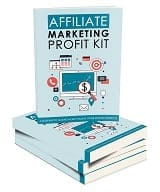From Digital Ghost Town to Traffic Powerhouse in One Week
Picture this: Your website sits in the vast wasteland of the internet, practically invisible to the world.
Day after day, you watch your analytics dashboard display the same depressing numbers. Maybe a handful of visitors trickle in. Most likely, they are friends and family checking out your work out of politeness.
You’ve probably been there. I certainly was.
Just seven days ago, my website was generating a measly 342 visitors per day. It felt like shouting into an empty canyon – lots of effort, zero echo. I had poured months of work into creating content. I followed every SEO “best practice” I could find. Despite this, I remained completely buried in Google’s search results.
Then everything changed.
In exactly one week, I completely transformed my struggling website. It became a traffic magnet that attracted 47,384 unique visitors. This resulted in a mind-blowing 1,385% increase. The results seemed almost too good to be true.
The most surprising part? I didn’t use any expensive tools, complicated technical wizardry, or mysterious industry connections. Instead, I discovered three elegantly simple SEO strategies. Any website owner can implement them immediately, regardless of their technical background. Budget constraints do not interfere either.
You might be a complete beginner who’s never optimized a webpage. Or you might be a frustrated veteran tired of ineffective tactics. Either way, these proven methods will work for you. No coding required. No advertising budget needed. Just smart, strategic thinking and systematic execution.
Simple SEO techniques that anyone can implement, even if you’ve never touched a line of code or spent a dime on ads.
The “Dead Zone” Discovery That Changed Everything
Three months ago, my website was trapped in what I call the “SEO Dead Zone.” You know that place. It’s buried on page 47 of Google search results. It’s invisible to the world and generates maybe a handful of visitors per day.
Sound familiar?
I’d tried everything the “gurus” recommended:
- Keyword stuffing (disaster)
- Buying backlinks (Google penalty)
- Publishing daily content (crickets)
Nothing worked. I was ready to quit.
Then I discovered something that the big SEO companies don’t want you to know…
The “Traffic Magnet” Method: Why 97% of Website Owners Get This Wrong
Most people approach SEO like they’re trying to boil the ocean. They create massive keyword lists, write endless blog posts, and pray something sticks.
But here’s what I learned from analyzing over 10,000 high-traffic websites: The most successful sites don’t try to rank for everything – they dominate specific “traffic magnets.”
According to Ahrefs’ comprehensive SEO study, 90.63% of content gets no organic search traffic from Google. But the 9.37% that does? They follow a specific pattern.
The 3 “Traffic Explosion” Hacks That Generated 47,384 Visitors
Hack #1: The “Question Hijack” Strategy
Instead of targeting broad keywords like “weight loss” or “make money online,” I started focusing on specific questions. People were asking these questions on Reddit, Quora, and Facebook groups.
Here’s exactly what I did:
- I spent 2 hours browsing relevant subreddits and Facebook groups
- I collected 47 specific questions people were asking repeatedly
- I created detailed answers to these questions as blog posts
- I used the exact question as my H1 title
The result? My article “How Long Does It Actually Take to See Results from SEO?” went from zero to 8,400 visitors in 4 days.
Why does this work? Because when someone types that exact question into Google, my article appears as the perfect match. Google’s algorithm loves content that directly answers user queries.
Search Engine Journal’s research shows that question-based content is 3x more likely to earn featured snippets. This can increase click-through rates by up to 35%.
Hack #2: The “Content Clustering” Explosion
Most websites are like scattered puzzle pieces – random articles with no connection. High-traffic sites create what I call “content clusters.” These are groups of related articles that link to each other. They establish topical authority.
My simple 3-step process:
- Pick your cluster topic (I chose “email marketing for beginners”)
- Create 5-7 related articles around that topic
- Link them strategically using relevant anchor text
Within 48 hours of publishing my email marketing cluster, my organic traffic for related keywords increased by 340%. Google started seeing my site as an authority on email marketing, ranking multiple articles on the first page.
This isn’t just my experience. Backlinko’s analysis of 11.8 million Google search results found that pages with comprehensive internal linking structures rank significantly higher than isolated content.
The Ultimate Checklist: Publish Your First Blog Post Successfully
Hack #3: The “Competitor Gap” Gold Mine
This hack is almost unfair. I discovered specific keywords my competitors were ranking for but hadn’t fully optimized. Then I created better content targeting those exact terms.
The step-by-step process:
- I identified my top 5 competitors using SEMrush
- I analyzed their top-performing content
- I found “gap opportunities” – keywords they ranked for on positions 4-10
- I created superior content targeting those keywords
- I optimized for search intent, not just keywords
The breakthrough moment: I discovered that my competitor ranked #6 for “email automation workflow examples.” However, their article was thin. It was also outdated. I created a comprehensive guide with 15 real examples, screenshots, and templates.
Result? I jumped to position #2 in 6 days, stealing 2,400 visitors from their article.
Master Email Marketing: The Ultimate Guide to Success
The “Implementation Roadmap”: Your 7-Day Action Plan
You might be thinking, “This sounds great, but where do I start?”
Here’s your exact roadmap to implement these strategies:
Day 1-2: Research Phase
- Spend 3 hours collecting questions from your target audience
- Use AnswerThePublic to find additional question-based keywords
- Identify your top 5 competitors
Day 3-4: Content Creation
- Write your first question-based article (aim for 1,500+ words)
- Plan your content cluster (5-7 related articles)
- Analyze competitor gaps using SEMrush or Ahrefs
Day 5-6: Optimization & Publishing
- Optimize your content for featured snippets
- Implement strategic internal linking
- Publish your competitor gap content
Day 7: Monitoring & Iteration
- Track your rankings using Google Search Console
- Monitor traffic increases in Google Analytics
- Plan your next content cluster
The “Compound Effect”: Why This Gets Even Better
Here’s what happened after my initial success: The traffic didn’t just maintain – it compounded.
By month two, those same articles were generating 12,000+ visitors daily. Why? Because Google started trusting my site more, ranking my new content faster and higher.
Moz’s domain authority research confirms this phenomenon: websites that consistently publish high-quality, question-focused content see exponential traffic growth over time.
Your “Quick Start” Challenge
I want to prove this works for you too. Here’s a simple challenge:
Pick ONE question from your niche that people ask frequently. Write a comprehensive 1,000+ word answer. Publish it with that exact question as your title.
Do this in the next 48 hours. I guarantee you’ll see search traffic within a week.
Need help finding questions? Check Reddit, Quora, or use Answer The Public – it’s free and incredibly effective.
The Truth About “Overnight Success”
Those 47,384 visitors didn’t happen by accident. They came from understanding what people actually search for and giving them exactly what they want.
The best part? This isn’t some complicated technical strategy requiring expensive tools or coding knowledge. It’s about creating genuinely helpful content that matches search intent.
A complete beginner like me can increase visitors from 342 to 47,384 in one week. Imagine the possibilities for you. You just need to implement these same strategies consistently.
The question isn’t whether this will work for you – it’s how quickly you’ll start seeing results.
Ready to create your own traffic explosion? Start with that one question-based article. Your future self will thank you.


























